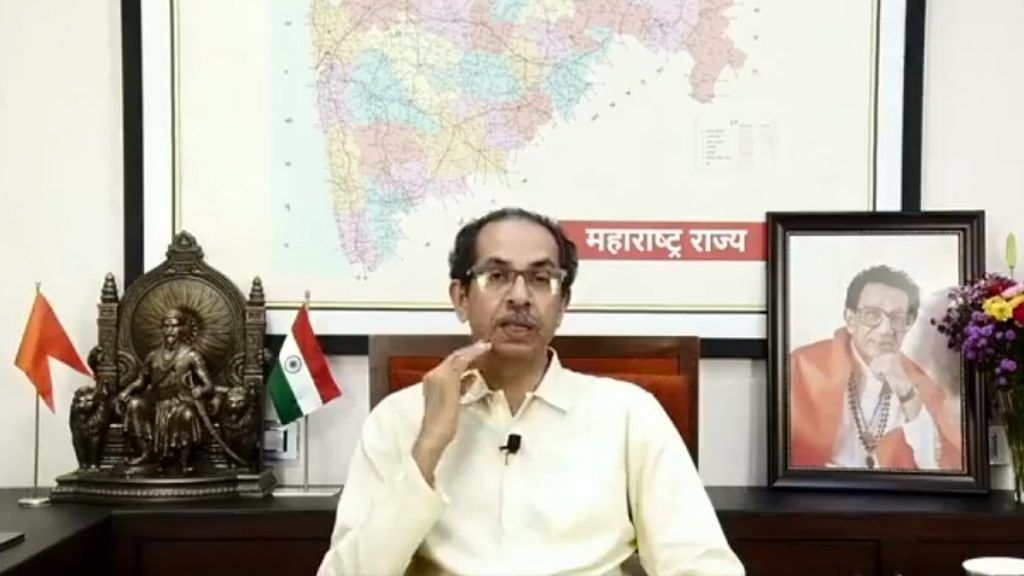By vacating his official residence Varsha, chief minister Uddhav Thackeray has signalled that the game is up for the Maha Vikas Aghadi government in Maharashtra. The strange bedfellows consisting of the Shiv Sena, Nationalist Congress Party and the Congress who cobbled a bizarre coalition in 2019 foiled the Bharatiya Janata Party’s attempts to form a government with the help of about 54 MLAs led by NCP’s Ajit Pawar. The three-party coalition paraded more than 160 MLAs who took an oath ‘not to fall prey to any inducements’ and switch loyalty.
About twenty months later, more than half of Shiv Sena MLAs have left the party’s father-son leadership high and dry, making the MVA coalition a thing of past. The political upheaval in Maharashtra looks more like a repeat of similar turbulence witnessed in many other states earlier. As far as carting away MLAs to secret locations, poaching of independent members and cross-voting goes, almost all political parties mirror each other.
Also read: MLAs are political entrepreneurs. Maharashtra is just the latest example
Shiv Sena’s biggest mistake
Last minute attempts to save the government do not work if its very foundation is skewed. Shiv Sena made the biggest mistake of joining hands with parties that were once considered by it as ‘untouchables’ and ideological adversaries. Incidentally, Udhhav Thackeray has added Shiv Sena to the list of parties with dubious distinction — Janta Dal (United), Janta Dal (Secular), Bahujan Samaj Party, Samajwadi Party and Telugu Desam Party, all of whom tied up with the Congress only to witness political Waterloo.
The turmoil in Maharashtra should not come as a surprise to anyone who has been watching the state from close quarters.
To begin with, the government formation in October 2019 was not based on strong democratic principles. The party position then was in favour of the BJP, which had emerged as the single largest party with 106 seats. The Shiv Sena with just 53 seats staked its claim to the CM post. The demand was based on the claim that the BJP had made a pre-poll agreement of power-sharing, according to which Shiv Sena would have its CM for the first two-and-a-half years, followed by the BJP for the remaining tenure. The BJP had dismissed the claim by Shiv Sena, saying there was no such agreement. What followed was an exhibition of political chicanery and in a way, the beginning of the end of Shiv Sena that the party’s doyen Balasaheb Thackeray has envisaged.
The Shiv Sena, in an act of revenge, ended up cutting its nose to spite the BJP.
Whoever scripted the split in Shiv Sena has attempted to highlight the irrelevance of feudalistic dynastic parties in modern democracy. Except the BJP and the Left parties, there is hardly any political outfit in India that can boast of not being a private business closely held by one family.
Udhhav Thackeray’s dream of anointing his son as his successor seems to have backfired. Meanwhile, if the BJP forms the next government, it should not come as a surprise if NCP extends its support. Maharashtra’s political veteran Sharad Pawar may wish to teach a lesson or two to his nephew on politics. Again, he too has to settle the succession issue in his own party.
Also read: Modi has actually given democracy a shot in the arm with his usual decision-making style
Shiv Sena without Sena
One outcome of this turmoil is that a new Shiv Sena could emerge without the Thackeray clan at the helm of affairs. The rebel leader Eknath Shinde could lead the breakaway group, which now seems to be stronger than the party itself. Like after the Congress split during Indira Gandhi’s tenure, the Shiv Sena might emerge as a renewed party with a new leader. In such a situation, the new leader will have to face the uphill task of bringing the party back on the original track, which gave it a place on the political platform of Maharashtra. From being a parochial anti-north Indian and anti-South Indian outfit, Shiv Sena, under the leadership of Bal Thackeray made a turnaround. Under a Hindutva umbrella, it teamed up with the BJP and displaced the Congress from the state.
The last Congress CM was Prithviraj Chavan (2010-2014). In spite of serious differences, the BJP and Shiv Sena partnership in 2019 election came up as a tough amalgamation to break. But the misstep by Uddhav proved to be a spoilsport. Compulsions of coalition made him make major compromises. A series of incidents like the lynching of Sadhus in Palghar was sought to be brushed under the carpet.
As of now, it seems to be ‘advantage BJP’ as the Shiv Sena is vertically split, the Congress is history and the NCP’s appeal is limited to half-a-dozen constituencies. As the single-largest party, the BJP with a proven leader in Devendra Fadnavis, can lay the foundation and emerge as a strong force in the coming years.
The author is the former editor of ‘Organiser’. He tweets @seshadrichari. Views are personal.
(Edited by Anurag Chaubey)
